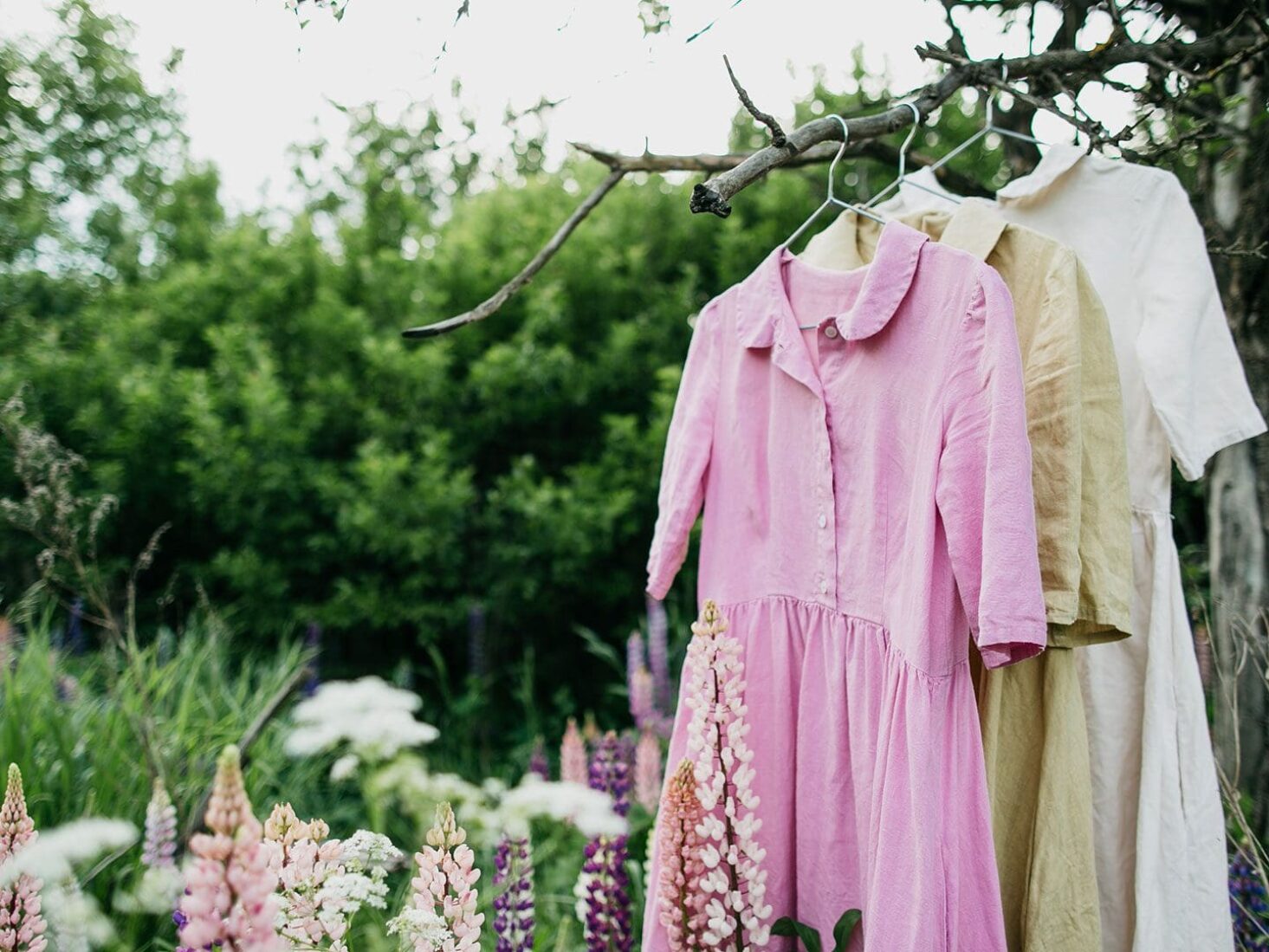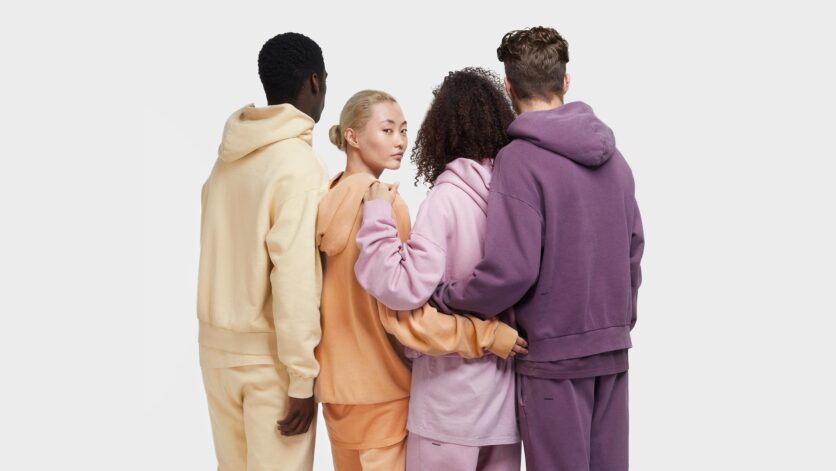
Greenwashing: The truth behind the fashion industry’s sustainability claims
What does greenwashing actually mean, and how can we avoid being deceived by it?
The fashion industry is one of the most polluting out there. In 2022, Bloomberg reported that the sector accounts for up to ten per cent of global carbon dioxide output, and a fifth of the plastic produced globally every year.
So what happens when you love fashion, but have a conscience? You look for labels with sustainable credentials – brands that recycle, use bio-based and degradable materials, minimise their water consumption, provide supply chain transparency, and so on.
Sounds easy, right? Well, not so much. With sustainability rising higher on the list of consumer priorities, brands are desperate to tout their green credentials… even if they don’t really have any. Thus, marketing becomes a minefield of half-truths, vagaries and deliberately nebulous claims, making it harder than ever to decipher whether or not a company actually cares about the environment, or just shareholder profits. Here’s how to navigate the maze.
What is greenwashing?
“Greenwashing is when companies make sustainability claims without evidence – this could be from a social and or environmental standpoint,” says Diana Verde Nieto, co-founder and co-CEO at sustainability group Positive Luxury.
The term was coined by Jay Westerveld in 1986. He was staying in a hotel that encouraged guests to reuse their towels in the name of the environment, which struck him as ironic considering the establishment’s many other unsustainable practices. Greenwashing is a play on whitewashing, which means hiding or falsifying a situation to make it seem better than it is; companies that greenwash convey a distorted impression of how green their products or practices really are.

Why do companies greenwash?
Greenwashing is an attempt to capitalise on the growing demand for environmentally-friendly products. Companies that do it are “tapping into the customer appeal of being sustainable,” says Verde Nieto.
When you look at the numbers, the motive becomes clear. According to GreenPrint’s 2021 Business of Sustainability Index, 64 per cent of Gen X consumers would be willing to pay extra for products deemed green; that figure jumps to 75 per cent for Millennials. A Deloitte survey found that 34 per cent of shoppers had stopped purchasing from certain brands due to ethical concerns. In the UK, the Competition and Market Authority says more than half of consumers take sustainability claims into account when making purchasing decisions.
Examples of greenwashing
The practice goes back as far as the mid-’80s and the infamous case of Chevron. The oil company ran an advertising campaign showing employees protecting bears, butterflies and sea turtles before it emerged that, during this time, Chevron was actively violating the Clean Air and Clean Water Act.
In 1991, chemical company DuPont came out with a similarly ironic campaign, announcing the launch of its double-hulled oil tankers with adverts featuring marine animals prancing in chorus to Beethoven’s Ode to Joy. The company was the largest corporate polluter in the US that year.
In a 2015 case that took greenwashing to a pretty extreme conclusion, Volkswagen admitted to cheating emissions tests by fitting vehicles with software that could detect when it was undergoing testing and reduce emissions – all while touting the green credentials of the model.

In recent years, fast fashion has emerged as a big greenwashing culprit; in a 2021 report, Changing Markets Foundation claimed that as many as 59 per cent of all environmental claims by European and UK fashion brands are misleading. Last year, Zara sparked suspicion for failing to release internal audits after committing to switch to 100 per cent renewable electric energy. H&M and Decathlon, too, have had to revise environmental claims after investigations by The Netherlands’ Authority for Consumer Markets; both promised to “adjust or no longer use sustainability claims on their clothes and/or websites”.
Ultra-fast fashion brands Boohoo and Shein have also caught heat for dubious green practices. The former’s ‘sustainable’ collaboration with Kourtney Kardashian Barker, and the latter’s decision to appoint a head of sustainability, appeared to be textbook cases of not seeing the wood for the trees.
After all, what does one sustainable collection (declared so for containing an unspecified amount of recycled fibres) really mean at a brand that churns out 700 new petrochemical-manufactured styles per week, in Boohoo’s case? And surely a head of sustainability can only be symbolic at Shein, which blows its fast-fashion competitors out of the water with a staggering 10,000 new products being uploaded to its website per day, only six per cent of inventory remaining in stock for more than 90 days, and returns often going into landfill, as it’s cheaper than putting them back into circulation?
How do companies greenwash?
Greenwashing can manifest itself in many ways. “Companies might use misleading labelling or imagery – often nature-based or green – which suggests to people, even subconsciously, that a product is positive,” says Verde Nieto.
“It can also look like vague statements, claims without substantiation, or misleading facts,” she continues. Brands may also use meaningless or unverifiable terminology such as ‘organic’ or ‘eco-friendly’ – alternatively, these claims may refer to only a small percentage of materials used. Labels that greenwash will advertise the use of recycled polyester, for example, in one of 30 steps in the creation of a garment, while the rest of the chain involves unsustainable methods.

In this vein, companies might market a small, one-off sustainable capsule in a way that implies their entire range is sustainable. They could also try to present standard industry practice as something special; for example, touting a material as having ‘chrome-free tanning’ makes it seem like an extra, green feature, when actually it’s a basic method of production.
Greenwashing may also see brands cherry-picking data (or conducting biased research), or using impressive-sounding credentials that, in actual fact, don’t prove anything. Being OEKO-TEX Standard 100-certified sounds good – broadly – but all it means is that the product poses no harm to human wellbeing, and has nothing to do with the environment.
Another term that sounds positive, but requires more digging into, is ‘net zero’. Companies that claim to be ‘net zero’ probably haven’t put the work in to reduce their carbon footprint; they may instead have paid for carbon offsetting, which has been found to be massively flawed. An analysis by The Guardian earlier this year suggested that more than 90 per cent of rainforest carbon offsets by the biggest certifier are worthless.
Another thing to watch out for is vegan leather – just because it isn’t an animal product, it doesn’t mean it’s better for the planet. Many vegan garments are simply made out of plastic, rather than genuinely sustainable alternatives like grape or mushroom leather.
How to spot – and avoid – greenwashing
Buildings have energy efficiency ratings. There are health grading systems on most packaged foods in the UK – these metrics may be imperfect, but they push the needle. There’s no real, standardised rating system for environmental friendliness in fashion.
So, until we get this, what can you do to ensure you’re buying sustainably? There are a number of fairly foolproof certifications you can look for, says Verde Nieto: “FSC for packaging, or the Butterfly Mark for luxury brands, show[s] they are on a journey of sustainability and ESG (environmental, social and governance) excellence. Cruelty Free ensures that the products are not tested on animals.” Is the brand a B Corp or Fair Trade certified? These organisations go some way to substantiating ethical claims.

As a more general rule, Verde Nieto reminds that “when something is too good to be true, it probably is!”, and urges consumers to “question it”. If a company is shouting about a sustainable initiative, look into its wider practices. Do they live up to that one capsule or collection more broadly? The same goes for throwing around noncommittal terms like ‘eco-friendly’ with no context. Don’t be taken in by claims about production methods or random certifications: they may not mean what you think they do.
Check the source of data or research. Don’t be fooled by packaging. If something is described as ‘recycled’, how much of it? If something is ‘net zero’, how have they achieved this? What is a vegan product actually made of?
Can fashion brands be sustainable?
What are some genuinely sustainable practices that brands can engage in? “Have ESG targets beyond net zero (carbon is just one part of the puzzle). Have an ESG baseline. Have a transitional plan in order to meet your targets,” says Verde Nieto. “Be transparent in the communication of all the above, acknowledging where there is work to do as well as the good stuff.”
Take apparel and beauty brand Bamford as an example. 94 per cent of the brand’s collections are made using renewable and biodegradable fibres, produced responsibly (think certified dyestuffs and water recycling systems). Or Pangaia, which has developed materials such as FLWRDWN™ (a down alternative created from wildflowers) and C-FIBER™ (a material developed from eucalyptus pulp and seaweed).

Few brands have taken the plunge and rejected the seasonal cycle of fashion, which constantly renders clothes obsolete and encourages consumers to buy more. Stockholm brand Asket, however, sells a single, permanent collection of timeless pieces.
Then there’s Ninety Percent, which shares 90 per cent of its profits between charitable causes and the production of sustainable materials – that’s what you call putting your money where your mouth is. The concept behind Re/Done, meanwhile, is repurposing old jeans, while footwear brand Alohas operates an on-demand shopping platform, meaning that users order in advance of production to eliminate waste.
There are plenty of small brands out there whose whole raison d’etre is sustainability. But what about brands with lots of skin in the game? Can you change an established business model?
Well, yes – legacy brands can engage in meaningful sustainability initiatives too, if the inclination is there. In 2021, Swarovski released a seemingly genuinely measurable and science-based six-point sustainability mission. Stella McCartney has long been a pioneer in green and vegan garments; its AW23 collection includes both mushroom and grape leather, as well as hidden QR codes that take you to details about a garment’s production – talk about transparency.
Gabriela Hearst has similarly put sustainability at the heart of her brand. The designer staged the first carbon-neutral fashion show during SS20’s New York Fashion Week, and around 25 per cent of collections are made from deadstock.

The future of greenwashing
“Sustainability is now becoming a regulated area – there are rules about what companies can and cannot do, and the same applies to their communications,” says Verde Nieto. Under the soon-to-pass Digital Markets, Competition And Consumer Bill, the CMA will have the power to impose civil penalties on companies that make misleading environmental claims, which will count as a breach of consumer law.
Verde Nieto believes that the days of greenwashing “are almost gone”, but, clearly, there are still hundreds of thousands of consumers willing to buy from the Sheins of the world. As long as there is demand for rock-bottom-cheap, readily-available fashion, the industry will struggle to shake its polluting reputation. That said, a crackdown on deceptive marketing may be the first stone laid in the building of a greener industry.






